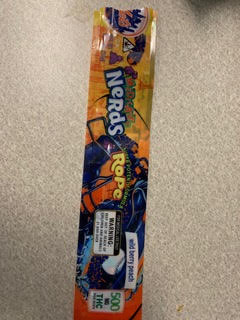Lawmakers should visit the hospital for a view of the effect these drugs have on communities
Guest Post by Dr. Karen Randall

I am an emergency medicine physician in southern Colorado. I see the harms of high-potency THC on a daily basis, and I wish you could see what I see.
We cannot put more drugs into the community and then expect that no harm will occur. Since legalization, the medical community has published hundreds, if not thousands, of articles relating to the harms being seen with these products, and I have yet to see a single peer-reviewed article that supports the use or safety of high-potency cannabis.
I worry that we are “trashing” a generation. Colorado kids are using these products more now than at any time before. And, when they use, they aren’t smoking joints. They start with dabs, shatter, waxes and oils — products that are easier to hide, have less odor, and are readily obtainable. Meanwhile, many articles show a marked increase in the risk of psychosocial illnesses associated with high-potency THC, especially for young people.
I want to share with you a few cases that recently came into my emergency department.
- Two children, 12 and 14 years old, purchased THC candy via Snapchat from someone who told them he was a dispensary owner. This is the new version of drug-dealing. These children purchased a single candy — made to look like a Nerds rope candy — which contained 500 milligrams of THC. For comparison, joints of the 1990s had about 3 to 5 mg of THC in them. This is a huge increase. Each child ate half of the candy and ended up in the emergency department for a prolonged stay.
- Last week when I went to work, I had three patients, all children, in the emergency department with suicidal ideation. All had THC addictions. The oldest is 15. One of the youngest — a middle school child — had been started on her marijuana “journey” by her parents, because they said it’s natural, harmless, and treats problems like medicine. Sadly, because high-potency products are addictive, her use exceeded what her parents were willing to give her. In order to get more marijuana, this middle school girl started trading sexual favors.
Each of these children were in the emergency department for a prolonged period of time. We can not claim racial balance when a preponderance of these stores/dispensaries/grow sites are located in the poorer communities — of color — like Pueblo. All of the patients referenced above are children of color.
Take the child trading sex for drugs. Even if I had a great addiction and psychological treatment for this child, the odds are hugely against her that she will be able to recover from the trauma of basically becoming a prostitute for THC at the age of 13. How do I, as a professional, get this child (and others — every day) back into a normal routine that allows them to experience true childhood? How do they get back to a life where they get educated or get a career? And how do I do this when there are extremely limited resources in this community of color?

These are just a few of the issues, and they barely scrape the surface of harms being seen at this end of the spectrum that no one wants to acknowledge. I extend my invitation to any lawmaker to spend a day in the ED with me. See what I see. Look at the faces of children, who at 13 are addicted, turning tricks, and have little to no hope of recovery. Talk with their parents.
Then, let’s talk about acute psychosis. Every day, another mother, father, brother or sister joins the realm of acute psychosis in a family member. These episodes, which often include acute violence and erratic behavior, are terrifying for the patient and for those around them. Along with the fallout from the pandemic, our children also have to deal with a community where drugs, especially high-potency THC products, are readily available. The chances of a child’s success in life dramatically decreases when their drug use goes up. Please take a stand for the kids.
I am not a lobbyist. I do not get paid money to speak about the harms of marijuana, especially the high-potency products. I am a physician and pediatrician.
Please feel free to contact me or to spend a day in the emergency department with us.



Thank you for speaking out about this problem. I see this happening in a state that Marijuana is not even legal. People are not charged for the use and even the state and local officials let it happen. It is very disturbing to see what is happening to the youth who do not have a clear understanding of what they are doing. Thank you for the work you do.
Smoking marijuana and consuming the edibles with highly concentrated THC is not “recreational” use. We need to convince legislators that the term “Adult Use” should replace the term recreational. This gives the impression to children that using marijuana is a leisure time activity that is basically harmless. These kinds of messages were used by Big Tobacco and Big Alcohol to induce impressionable children that their products were safe and harmless. Marijuana advocates know the same statistics as the Tobacco and Alcohol Industries…somewhere between 10-20% of the population has the potential to become addicted to one or more of their products. This is what they all are counting on for future “customers”. This is a timely and important article for anyone who cares about children and prevention.